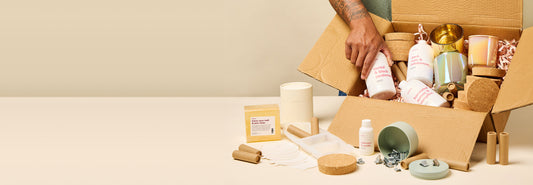Mastering the Art of Solubilizing Fragrance
Hello, wonderful soap makers! Today, we're focusing on a crucial aspect of crafting beautifully scented soaps: solubilizing fragrance. Whether you're infusing your soaps with calming lavender or invigorating citrus, getting the fragrance right is key to creating an appealing and high-quality product. Let’s dive into how to seamlessly integrate those delightful scents into your soap creations.
1. What is Solubilization?
Solubilization involves incorporating an oil-soluble fragrance into a water-based medium. For soap making, this means ensuring that the fragrance oil mixes thoroughly with your soap base, without separating or floating to the top. This ensures a consistent scent and quality in every bar.
2. Choosing the Right Solubilizer
To achieve a clear and stable mixture in soap making, you'll need a solubilizer. Polysorbate 20 is a popular choice among soap makers. It’s a non-toxic, mild surfactant that helps oil blend seamlessly into water-based products.
3. How to Mix Fragrance and Solubilizer
Here’s a step-by-step approach to mixing your fragrance oil with a solubilizer:
- Step 1: Measure your fragrance oil. Depending on your recipe, this is usually around 1-3% of your total batch weight.
- Step 2: Add an equal amount of Polysorbate 20 to your fragrance oil. For example, if you use 10 grams of fragrance oil, you should also use 10 grams of Polysorbate 20.
- Step 3: Mix them together thoroughly until the oil is completely incorporated into the solubilizer.
4. Integrating into the Soap Base
Once you have your fragrance and solubilizer mixture ready, it’s time to add it to the soap base. Follow these tips for the best results:
- Add at Light Trace: Incorporate your fragrance-solubilizer mix into your soap batter when it reaches a light trace. This helps ensure even distribution before the soap thickens.
- Stir Gently but Thoroughly: Use a spatula or a slow-speed hand blender to mix the fragrance evenly throughout the soap batter.
5. Testing for Clarity and Stability
After adding the fragrance, pour a small amount of soap into a mold and let it set. Check for any separation, cloudiness, or oil pockets. If the sample is clear and uniform, proceed with the rest of the batch. If not, you might need to adjust the ratio of Polysorbate 20 to fragrance oil.
6. Safety and Compliance
Always ensure that the fragrances and solubilizers you use are safe for skin contact and appropriate for soap making. Wear protective gear like gloves and goggles when handling these substances, especially in large quantities.
7. Document Your Process
Keeping detailed records of your fragrance formulations and the amounts you use can help you replicate successful batches and tweak those that need improvement. This documentation will be invaluable as you refine your soap making skills.
Wrap-Up
Mastering the art of solubilizing fragrances will elevate your homemade soaps from good to exceptional. It allows for a more professional finish, ensuring that each bar is fragrant and appealing. With practice and patience, you’ll be able to perfect this process and perhaps even develop signature scents that set your soaps apart.
Be sure to tag us in your finished creations on Instagram using #makesymade for a chance to get featured on our wall of inspo & win a $100 makesy gift card. Happy making!
Happy soap making, and may your creations be as delightful to smell as they are to use!





